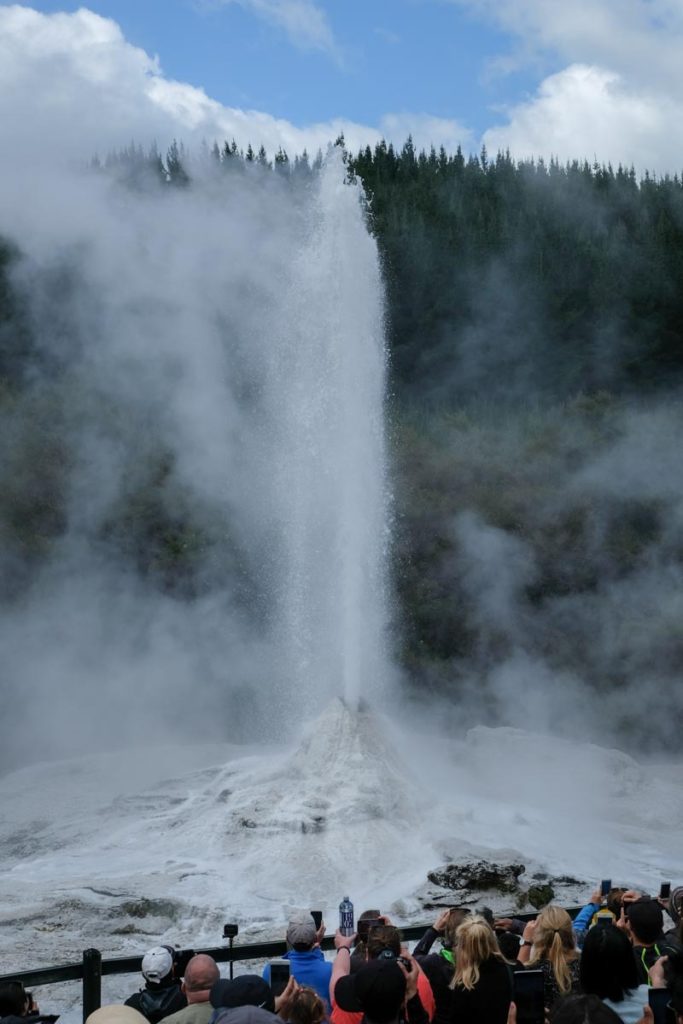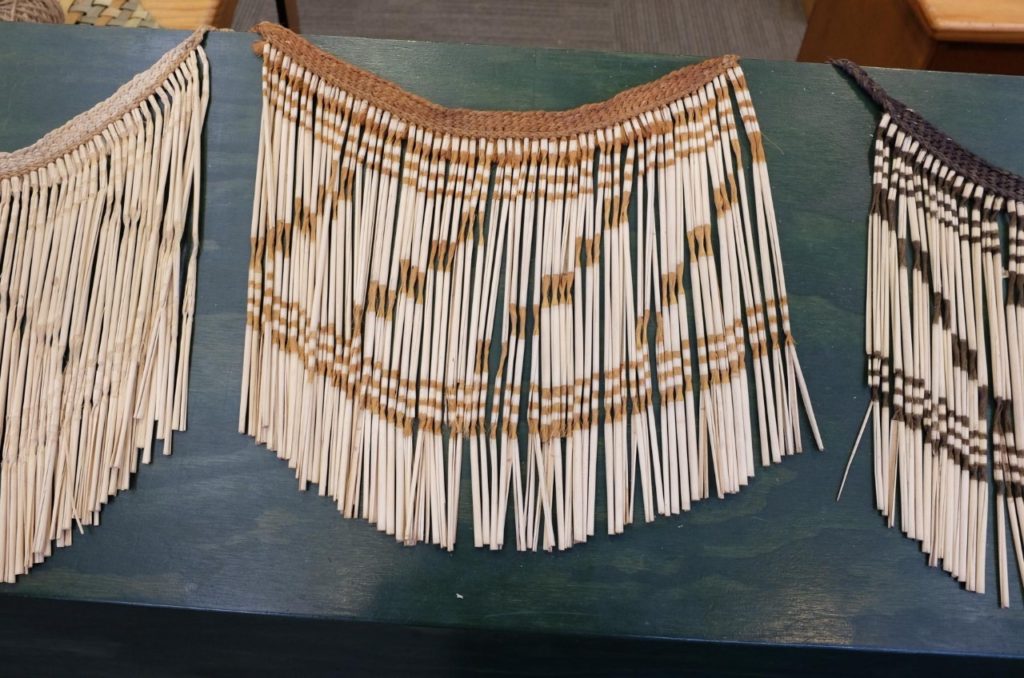Rotorua, New Zealand
Lat time I was on the dance floor was last spring in Cuba. Some of you may remember that our dancing on that trip involved rum shots, salsa dancing and some rather young and attractive young salsa instructors. Tonight was a little different. After admiring the All Black’s Haka war dance on the flight to Auckland, I found myself with a bunch of other old geezers from all over learning the basics of Haka. I can’t wait to get back to Florida this winter for some good old fashioned fox trotting.
The deal was an evening at Te Puia here in Rotorua for a comprehensive package of entertainment by the local Mauri Te Arawa tribe. They gave us the whole nine yards:
- Viewing of the Pohutu geyser, which went off within 15 minutes of our 4:30 PM arrival
- Viewing of the thermal mud pit
- Attempted viewing of a real live Kiwi bird that, unfortunately, was hiding in a corner of its habitat. Kiwis are nocturnal and the habitat is set up to be dark during tourist hours so she’s hard to see even when out in the open
- A gift shop opportunity
- A traditional Maori welcoming ceremony
- Performance of Maori song and dance. Some time back traditional Maori chants, which are a form of oral history. Some time back the chants were augmented with guitar, harmony and a modern sound. The quality of the singing and dancing was quite good. This is where the Haka dancing came into play.
- A pit-baked dinner, which for a tourist meal was actually not badYou’ve probably experienced something like this in a different part of the world. A western cowboy dinner production perhaps.The thing that made this one different was an observation made by our guide nicknamed Rob (his Maori name has more characters than I’d care to count say nothing of pronounce). Rob is a member of the Te Arawa tribe that owns the Te Pua complex. He told us that preservation of Maori culture highly depends on the degree to which a tribe is able to participate in the tourism industry. His tribe, and the other local tribe, own property and earn an income stream. The tribes plow the money back into the community in the form of educational scholarships and programs. In the case of the Te Araawa tribe they operate an arts and crafts educational program that teaches Maori wood carving and weaving skills in a formal classroom setting.Not too long ago Maori were punished in school for using the Maori language. That’s not true today. The government recognizes the value Maori culture and communities brings to New Zealand’s toourism industry. So one reason for the Maori’s acceptance in the broader New Zealand community is the economic advantage the Maoris bring.
That was the evening. Let’s backtrack to the morning and afternoon program: a trip 30 Kms south of Rotorua to the Wai-O-Tapu “thermal wonderland.”
New Zealand is at the southwest most extent of the famous Ring of Fire – an arc of tectonic plate collisions that encircles the Pacific Ocean, extending from Chile in South America, up the coast through California and Alaska and then looping southward to Japan and eventually New Zealand. I’ve swiped a picture from https://en.wikipedia.org/wiki/Ring_of_F ire#/media/File:Pacific_Ring_of_Fire.sv g to remind myself. Wikipedia says 90% of earthquakes occur along the Ring of Fire. New Zealand has its share of them. They say that Wai-O-Tapu is New Zealand’s most colourful and diverse volcanic area: a place where the Ring of Fire comes to the Earth’s surface for us to see.
Wai-O-Tapu has two parts: a spew on demand geyser and a whole series of thermal pools with walkways leaing to the near each. The geyser normally goes off when ever it feels like it. But somehow local prisinors working in the area figured out that chemicals placed in the cone would break the surface tebsion and cause the geyser to errupt. Today the park rangers set it off at 10:30, about 20 minutes after we arrived.
After we walked around three areas of thermal pools. The brochure said the walk should take 75 minutes. We took a bunch of pictures and needed 150 minutes. In fact, rather than blathering on any longer (it’s getting late) I’ll let you look at the pictures.
Tomorrow we pull up stakes and head off for Tapau, which is only 100 Km or so south, but we’re taking a significantt swing out of our way to visity the glow worm caves at Waitomo.





















